Medical students have a lot to learn, not only about anatomy, pharmacology, and pathology, but also about the human experience. Reading can be an excellent way for medical students to gain insight into the diverse and complex nature of medicine and the people who practice it. In this blog, we have compiled a list of the 20 best books for medical students, covering a range of topics from memoirs of patients and doctors to historical accounts of medical breakthroughs. Overall, these books offer medical students a wealth of information, insights, and inspiration, and are essential reading for anyone pursuing a career in the field of medicine.
The Benefits of Reading for Medical Students
Reading is an important part of any medical student’s education. Reading can help medical students develop their critical thinking skills, stay up to date on medical advances, and gain insight into the medical profession. Additionally, reading can help medical students stay focused on their studies and expand their knowledge base.
Reading can also help medical students develop their communication skills. By reading medical journals, memoirs and other publications, medical students can learn how to effectively communicate their findings and ideas to their peers and colleagues. Furthermore, reading can help medical students become more aware of the ethical and legal implications of their work, as well as the importance of patient confidentiality.
- Essential Textbooks for Medical Students
- Textbooks for Clinical Rotations
- Books on Human Anatomy and Physiology
- Books on Pathology and Disease
- Books on Pharmacology and Drug Therapy
- Books on Evidence-Based Medicine
- Books on Medical Ethics and Law
- Books on Professional Development
- Books on Public Health and Policy
- Recommended Novels and Memoirs for Medical Students
- Recommended Nonfiction for Medical Students
- In summary
Essential Textbooks for Medical Students
Textbooks are an essential part of any medical student’s education. Here are our top textbooks for medical students:
Robbins and Cotran Pathologic Basis of Disease
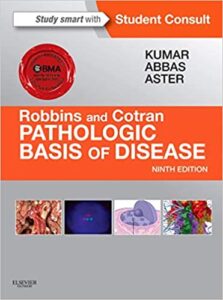
Robbins and Cotran Pathologic Basis of Disease is a comprehensive reference book that provides a detailed insight into the pathologic basis of human diseases. With a focus on the cellular and molecular mechanisms underlying disease pathogenesis, the book covers a wide range of topics including genetic and environmental factors, inflammation, neoplasia, and infectious diseases. The book is written in a clear and concise manner, with numerous illustrations and tables that enhance understanding. While it may be dense and daunting for some, it is an essential resource for medical students seeking a deeper understanding of the mechanisms of underlying disease. Overall, it is an invaluable reference that belongs on the bookshelf of any medical professional.
Harrison’s Principles of Internal Medicine

Harrison’s Principles of Internal Medicine is a classic and widely recognized textbook that provides a comprehensive overview of the field of internal medicine. The book covers a broad range of topics, including pathophysiology, clinical manifestations, diagnosis, and treatment of various medical conditions. The content is well-organized and presented in a clear and concise manner, making it an excellent reference for medical students. The text is also enhanced with numerous illustrations, tables, and diagrams that aid in understanding complex concepts. While the book is quite lengthy, it is a necessary investment for those seeking a deep understanding of internal medicine.
Clinical Microbiology Made Ridiculously Simple
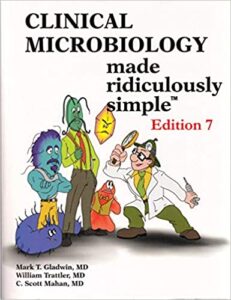
Clinical Microbiology Made Ridiculously Simple is an excellent introductory textbook that provides a simplified and concise overview of the field of clinical microbiology. The book covers a wide range of topics, including the basic principles of microbiology, the identification of common pathogens, and the interpretation of laboratory test results. The text is written in a humorous and engaging style, which makes it easy to read and understand. It also includes helpful mnemonics, illustrations, and tables that aid in retention and recall of important information. While the book may not be sufficient for in-depth study, it is an excellent resource for medical students seeking a quick and easy way to understand the essentials of clinical microbiology.
Essentials of Anatomy and Physiology

Essentials of Anatomy and Physiology is a comprehensive introductory textbook that provides a detailed understanding of the human body’s structure and functions. The book covers a wide range of topics, including the skeletal, muscular, cardiovascular, respiratory, digestive, nervous, and endocrine systems. The content is presented in a clear and concise manner, with numerous illustrations and diagrams that aid in comprehension. The text also includes clinical applications and case studies that highlight the relevance of anatomy and physiology to real-world situations. While the book may be dense and lengthy, it is an essential resource for students studying anatomy and physiology for the first time.
Any medical dictionary
The textbooks above provide a comprehensive overview of the essential topics in medical school. In addition to these textbooks, medical students should also consider purchasing a medical dictionary and a pharmacology reference book. A medical dictionary will help students understand medical terminology, while a pharmacology reference book will provide detailed information about the various drugs used in medical practice. Both of these resources are invaluable for medical students.
Textbooks for Clinical Rotations
Clinical rotations require medical students to have an understanding of various medical specialties. The textbooks below provide essential knowledge for clinical rotations.
Rosen’s Emergency Medicine

Rosen’s Emergency Medicine is a comprehensive textbook that provides an in-depth overview of emergency medicine. The book covers a wide range of topics, including trauma, cardiovascular emergencies, respiratory emergencies, infectious diseases, and toxicology. The content is presented in a clear and concise manner, with numerous illustrations, tables, and algorithms that aid in understanding complex concepts. The text is also enhanced with the latest evidence-based practices and guidelines, making it an up-to-date resource for medical professionals. While the book may be dense and lengthy, it is an invaluable reference for students who need a comprehensive guide to emergency medicine.
Step-Up to Medicine
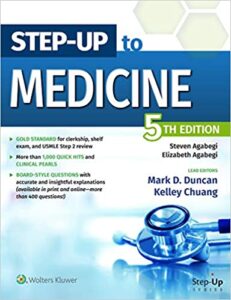
Step-Up to Medicine is an excellent review book that provides a comprehensive overview of internal medicine for medical students preparing for clinical rotations and board exams. The book covers a broad range of topics, including cardiology, gastroenterology, pulmonology, nephrology, endocrinology, and infectious diseases. The content is well-organized and presented in a clear and concise manner, with helpful mnemonics, tables, and diagrams that aid in understanding complex concepts. The text also includes clinical pearls and case studies that highlight the practical applications of internal medicine in real-world scenarios. While the book may not be sufficient for in-depth study, it is an excellent resource for medical students seeking a quick review of internal medicine before exams.
Pathology: A Color Atlas

Pathology: A Color Atlas is an outstanding visual reference book that provides a comprehensive overview of various pathological conditions. The book covers a wide range of topics, including inflammatory, infectious, neoplastic, and genetic diseases, with each section accompanied by high-quality colour images that illustrate the pathological findings. The content is presented in a clear and concise manner, with detailed descriptions of the pathological features and associated clinical implications. The text is also well-organized and easy to navigate, making it an excellent resource for medical students, residents, and practicing doctors. While the book may not be sufficient for in-depth study, it is an essential resource for anyone seeking a visual aid in understanding pathology.
Atlas of Clinical Ophthalmology
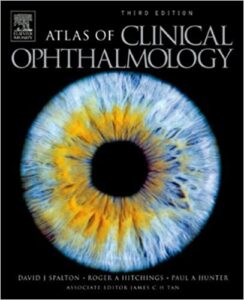
The Atlas of Clinical Ophthalmology is an excellent visual reference book that provides a comprehensive overview of various ocular conditions. The book covers a wide range of topics, including cataracts, glaucoma, corneal diseases, retinal disorders, and ocular oncology, with each section accompanied by high-quality colour images that illustrate the clinical findings. The content is well-organized and presented in a clear and concise manner, with detailed descriptions of the clinical features, diagnosis, and treatment options for each condition. The text is also enhanced with the latest evidence-based practices and guidelines, making it an up-to-date resource for medical students.
A pocket guide
In addition to these textbooks, medical students should also consider purchasing a pocket guide for quick reference during their clinical rotations. Pocket guides such as Pocket Medicine and Pocket Emergency Medicine are designed to provide quick access to essential information and can be easily carried in a lab coat pocket.
Books on Human Anatomy and Physiology
An understanding of human anatomy and physiology is essential for any medical student. In addition to providing detailed descriptions of the body’s systems and organs, these books also include illustrations and diagrams to help readers visualize the structures and functions of the body. They also provide information on common diseases and disorders, as well as the latest research and developments in the field of human anatomy and physiology.
Essentials of Human Anatomy and Physiology
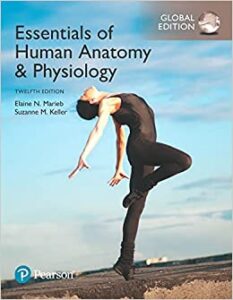
Essentials of Human Anatomy and Physiology by Elaine N. Marieb is a well-written, well-organized textbook that covers all major topics in human anatomy and physiology. With clear language, helpful illustrations, and useful study aids, it’s an excellent resource for anyone looking to deepen their understanding of the human body.
Human Physiology: An Integrated Approach
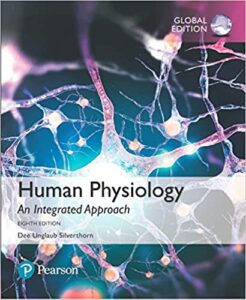
Human Physiology: An Integrated Approach by Dee Unglaub Silverthorn is a comprehensive and accessible textbook that covers the intricate workings of the human body. The author uses a systems-based approach to provide a cohesive understanding of physiology. The book is well-organized and presents the material in a clear and concise manner, making it easy for students to comprehend complex concepts. The illustrations are also excellent, providing visual aids to enhance the understanding of the material. The text is supported by numerous study aids, including review questions, key terms, and case studies, making it an excellent resource for students of all levels.
Gray’s Anatomy for Students
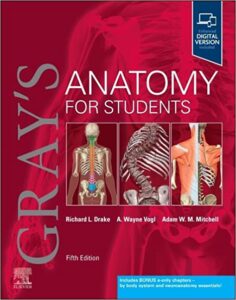
Gray’s Anatomy for Students is an excellent resource for students studying human anatomy. The textbook is written by Richard Drake, A. Wayne Vogl, and Adam W. M. Mitchell and is based on the iconic “Gray’s Anatomy” text. The book is well-organized, with clear and concise writing that makes the material easy to understand. The illustrations are outstanding, providing detailed and labelled images of the human body. The book also includes helpful study aids such as review questions, clinical correlations, and surface anatomy sections.
Books on Pathology and Disease
Pathology and disease are important topics in medical school. These textbooks provide an overview of the pathologic processes that underlie disease:
Cecil Textbook of Medicine
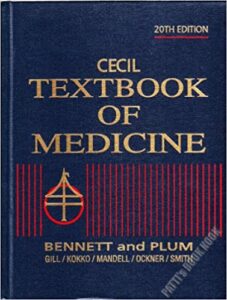
Cecil Textbook of Medicine is a comprehensive and authoritative resource for medical students. The textbook is written by a team of experts in the field and covers a wide range of topics in internal medicine. The writing is clear, concise, and evidence-based, providing a deep understanding of medical conditions, their diagnosis, and treatment. The book is well-organized, with easy-to-follow sections, and includes helpful images, tables, and figures to enhance the learning experience. Additionally, the book includes valuable resources such as online access to the complete text, self-assessment tools, and updated content reflecting the latest medical research.
Robbins & Cotran Pathologic Basis of Disease
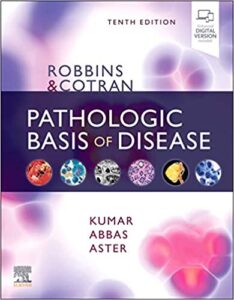
Robbins & Cotran Pathologic Basis of Disease is an authoritative textbook that provides a comprehensive and in-depth understanding of the pathogenesis and pathophysiology of various diseases. The book covers a broad range of topics, including cell injury and death, inflammation, neoplasia, immunology, and cardiovascular, respiratory, renal, gastrointestinal, and neurological diseases. The text is enhanced with the latest evidence-based practices and guidelines, making it an up-to-date resource for medical students. While the book may be dense and lengthy, it is an essential resource for medical students, residents, and practicing physicians seeking a comprehensive guide to the underlying mechanisms of diseases. Overall, “Robbins & Cotran Pathologic Basis of Disease” is a highly recommended textbook for anyone seeking a deep understanding of disease pathology.
Robbins Basic Pathology

Robbins Basic Pathology is a comprehensive and well-organized textbook that provides a thorough understanding of the pathologic mechanisms underlying various diseases. The book covers a broad range of topics, including cellular pathology, inflammation, immunology, neoplasia, genetic and pediatric diseases, and environmental and nutritional diseases. The text is enhanced with clinical correlations, key concepts, and summary tables that highlight the important takeaways. While the book may be dense and lengthy, it is an essential resource for medical students seeking a comprehensive guide to the pathologic basis of diseases.
Books on Pharmacology and Drug Therapy
Pharmacology is an important part of any medical student’s education. These textbooks provide a comprehensive overview of pharmacology, as well as specific drug therapies:
Goodman & Gilman’s The Pharmacological Basis of Therapeutics

Goodman & Gilman’s The Pharmacological Basis of Therapeutics is a comprehensive and authoritative textbook that provides an in-depth understanding of pharmacology and its application in therapeutics. The book covers a broad range of topics, including pharmacokinetics, pharmacodynamics, drug metabolism, drug interactions, and the pharmacology of various drug classes. The text is also enhanced with clinical applications, emphasizing the practical aspects of pharmacology and its use in patient care. It’s a highly recommended textbook for anyone seeking a thorough understanding of pharmacology and its application in clinical practice.
Katzung & Trevor’s Pharmacology
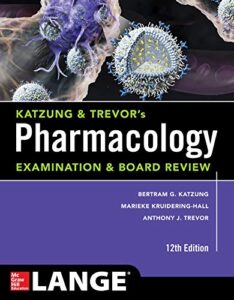
Katzung & Trevor’s Pharmacology is an excellent textbook that provides a comprehensive and up-to-date understanding of pharmacology and its application in clinical practice. The text is also enhanced with clinical applications, emphasizing the practical aspects of pharmacology and its use in patient care. Additionally, the book includes self-assessment questions and case studies, making it an excellent resource for medical students and residents preparing for exams.
Basic & Clinical Pharmacology
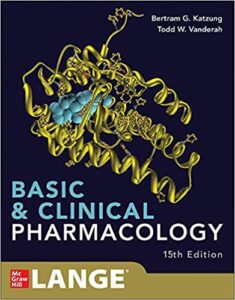
Basic & Clinical Pharmacology is an excellent resource for medical students seeking a comprehensive and concise guide to pharmacology. The book covers a broad range of topics, including drug metabolism, interactions, and the pharmacology of various drug classes. The text is well-organized, presented in a clear and concise manner, and includes self-assessment questions and case studies for exam preparation. Overall, it is an essential addition to any medical student’s library.
Books on Evidence-Based Medicine
Evidence-based medicine is an essential part of any medical student’s education. These books provide an introduction to evidence-based medicine, as well as strategies for utilizing evidence-based medicine in clinical practice:
Evidence-Based Medicine: How to Practice and Teach it
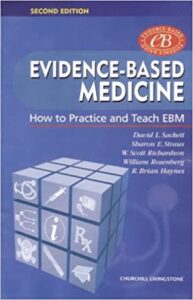
Evidence-Based Medicine: How to Practice and Teach it is an excellent guide for medical students and educators. The book provides a clear and concise overview of the principles of evidence-based medicine, including how to critically appraise the literature and apply the evidence to clinical practice. The text is well-organized and easy to navigate, with numerous examples and case studies that illustrate the practical application of evidence-based medicine.
Evidence-Based Diagnosis in Primary Care
Evidence-Based Diagnosis in Primary Care: A Practical Approach to Clinical Decision Making is an excellent resource for medical students seeking to develop their skills in clinical decision making. The book provides a clear and concise overview of evidence-based diagnosis, including how to use clinical prediction rules, decision trees, and Bayesian analysis to make accurate diagnoses. Additionally, the book includes self-assessment questions and learning objectives, making it an excellent resource for exam revision.
Evidence-Based Diagnosis: An Introduction to Clinical Epidemiology
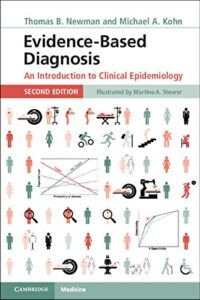
Evidence-Based Diagnosis: An Introduction to Clinical Epidemiology is an essential resource for medical students seeking to develop their skills in clinical diagnosis. The book provides a clear and concise overview of the principles of clinical epidemiology and evidence-based diagnosis, including how to use probability, sensitivity, specificity, and likelihood ratios to make accurate diagnoses.
Books on Medical Ethics and Law
Medical ethics and law are important topics in medical school. These books provide an introduction to the ethical dilemmas that may arise in clinical practice, as well as strategies for addressing them:
Professionalism in Medicine: A Case-Based Guide to Medical Ethics
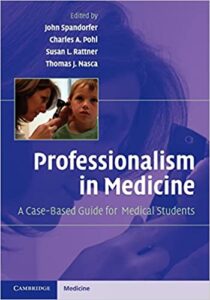
Professionalism in Medicine: A Case-Based Guide to Medical Ethics is an excellent resource for medical students seeking to develop their understanding of medical ethics and professionalism. The book provides a clear and concise overview of the principles of medical ethics, including confidentiality, informed consent, and end-of-life care. The text is well-organized, with numerous case studies that illustrate the practical application of medical ethics principles. Additionally, the book includes self-assessment questions and learning objectives, making it an excellent resource for exam preparation.
100 Cases in Clinical Ethics and Law
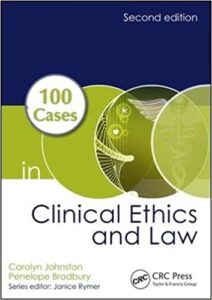
100 Cases in Clinical Ethics and Law is a highly informative and engaging book that presents real-life cases to help medical students and healthcare professionals navigate complex ethical and legal issues in clinical practice. Each case is presented in a clear and concise manner, and includes a brief summary, discussion of relevant ethical and legal considerations, and recommendations for how to approach similar cases in the future. The book covers a wide range of topics, from consent and capacity to end-of-life care and confidentiality, and provides practical guidance on how to apply ethical and legal principles in clinical practice.
Law and Ethics in Medicine: A Guide for Clinical Practice
Law and Ethics in Medicine: A Guide for Clinical Practice” is a comprehensive resource that every medical student should have in their arsenal. The book covers a wide range of legal and ethical topics relevant to clinical practice, including consent, confidentiality, decision-making capacity, end-of-life care, and medical malpractice. The authors provide a detailed and nuanced analysis of each issue, and the use of real-world cases and scenarios makes the text both engaging and practical. This book not only provides a solid foundation for navigating the complexities of medical practice but also serves as an important reminder of the ethical responsibilities that come with being a healthcare professional
Medical Ethics: A Case-Based Approach

Medical Ethics: A Case-Based Approach is an outstanding resource for medical students seeking to develop their understanding of medical ethics. The book employs a unique case-based approach that encourages active learning and promotes critical thinking. The authors present a diverse range of cases that explore complex ethical issues such as end-of-life care, physician-assisted suicide, and genetic testing. The cases are thought-provoking and challenging, and the authors provide clear and concise analyses of each scenario.
Books on Professional Development
Professional development is an important part of any medical career. These books offer advice on communication strategies, time management strategies, negotiation tactics, and career advancement strategies. They provide insight into how to be successful in one’s professional life:
How Doctors Think
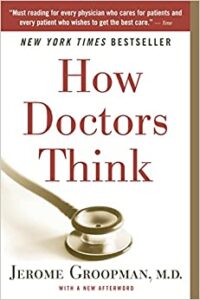
How Doctors Think delves into the cognitive biases that can impact clinical decision-making, and provides practical strategies to help overcome them. It encourages medical students to think critically and challenge assumptions to arrive at accurate diagnoses.
The Checklist Manifesto: How to Get Things Right
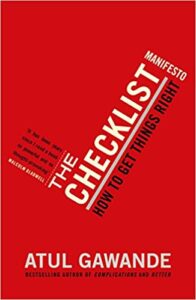
The Checklist Manifesto argues for the use of checklists as a tool to improve patient safety and reduce errors in healthcare. Author Atul Gawande explores the concept of human fallibility and how it impacts the practice of medicine. Using real-life examples and case studies, Gawande delves into the importance of checklists, teamwork, and constant improvement in healthcare. The book highlights the importance of recognizing one’s own fallibility and seeking feedback and input from others to ensure the best outcomes for patients. Gawande’s writing is engaging and accessible, and his insights are valuable not just for medical students, but for healthcare professionals at all levels.
The Achievement Habit: Stop Wishing, Start Doing, and Take Command of Your Life
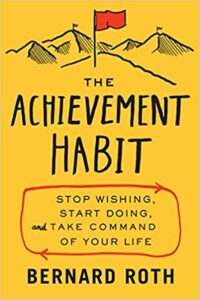
The Achievement Habit by Bernard Roth offers a fresh perspective on how to take control of your life and achieve your goals. Roth’s approach focuses on practical steps that can be taken to break down barriers and overcome obstacles, and he encourages readers to take a proactive approach to problem-solving. While not specifically geared towards medical students, the lessons and insights presented in the book can be applied to any area of life, including the pursuit of a medical career.
Never Split the Difference: Negotiating As If Your Life Depended On It
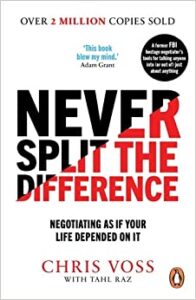
Never Split the Difference by Chris Voss is a fascinating and informative book that offers valuable insights into the art of negotiation. While the book is not specifically geared towards medical students, the lessons presented are highly relevant to the field of medicine, where negotiation and communication skills are essential for success. Voss, a former FBI hostage negotiator, shares his expertise and experience in negotiating high-stakes situations to help readers become more effective negotiators in their own lives. The book is full of practical tips and strategies that can be applied in a wide range of settings, from job interviews to salary negotiations to patient interactions.
Books on Public Health and Policy
Public health and policy are important topics in medical school. Our recommended books on public health and policy are:
Public Health Administration: Principles for Population-Based Management

Public Health Administration: Principles for Population-Based Management is an excellent resource for medical students interested in public health management. It covers a wide range of topics, including health policy, program planning and evaluation, financial management, human resource management, and leadership. The authors use real-world examples to illustrate key concepts, making the material easy to understand and apply. The book also includes case studies and exercises to help students develop critical thinking and problem-solving skills.
Public Health Law: Power, Duty, Restraint

Public Health Law: Power, Duty, Restraint is an indispensable resource for medical students interested in public health policy and practice, and it provides a solid foundation for understanding the legal challenges and opportunities in this field. The authors use case studies and examples to illustrate the application of public health law in real-world situations. They also provide a critical analysis of the tensions between individual rights and public health interests.
Recommended Novels and Memoirs for Medical Students
For medical students looking for a good read, there are a number of popular books available. Some of the most powerful lessons can be learned from others. Some popular books for medical students include:
The House of God

The House of God is a must-read book for medical students. Written by Samuel Shem, a former medical intern, this novel is a satirical and humorous account of the medical training and culture in the 1970s. The book follows the experiences of Dr. Roy Basch, a young intern at the fictional hospital, the House of God. The novel highlights the emotional and physical toll that medical training can take on doctors, as well as the flaws in the healthcare system. Shem’s use of humor and wit makes the book an engaging and enjoyable read, while also providing valuable insights into the challenges of medical training and patient care.
Do No Harm

Do No Harm by Henry Marsh is a gripping memoir that provides a rare glimpse into the world of neurosurgery. Marsh, a renowned British neurosurgeon, shares his experiences and reflections on his career, detailing the highs and lows of working in this challenging field. The book delves into the complexities of surgical decision-making and the emotional toll that medical errors and difficult outcomes can have on both patients and physicians. Marsh’s writing is insightful and introspective, offering a candid look at the personal and professional challenges of being a neurosurgeon.
My Own Life

My Own Life by David Hume is a powerful and poignant reflection on life, death, and the human condition. Written in the final months of his life, Hume’s memoir provides a moving account of his thoughts and experiences as he faced his own mortality. The book is notable for its honesty and clarity, as Hume grapples with profound questions about the nature of existence and the meaning of life. For medical students, the book provides a valuable reminder of the importance of empathy and compassion in caring for patients facing end-of-life issues.
The Autobiography of a Face
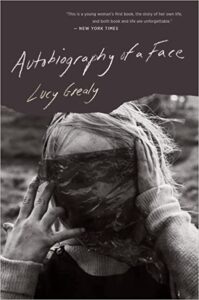
The Autobiography of a Face by Lucy Grealy is a powerful and moving memoir that explores the author’s experience of living with a facial disfigurement. Grealy’s writing is vivid and compelling, as she shares her struggles with surgeries, chemotherapy, and the emotional toll of living with a visible difference. The book is a testament to the resilience and courage of the human spirit, as Grealy overcomes the physical and emotional challenges of her condition to find meaning and purpose in her life. For medical students, the book offers valuable insights into the social and emotional impact of medical conditions.
Grey’s Anatomy: The Official Guide To Season One
Grey’s Anatomy: The Official Guide To Season One is an entertaining and informative companion guide to the popular medical drama series. The book provides an in-depth look at the first season of the show, including character biographies, episode summaries, and behind-the-scenes commentary from the cast and crew. The book also features medical facts and explanations, making it a useful resource for medical students interested in exploring the accuracy of medical depictions in the show. The writing is engaging and accessible, and the layout is visually appealing, with plenty of photos and illustrations.
Recommended Nonfiction for Medical Students
Whilst not medical texts, these books still offer insight into the world of medicine and the medical profession. These books provide a unique perspective on the medical profession and can help medical students gain a better understanding of the challenges and rewards of being a doctor.
The Emperor of All Maladies
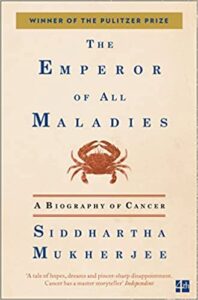
The Emperor of All Maladies by Siddhartha Mukherjee is a compelling and masterful exploration of the history of cancer. The book offers a comprehensive account of the disease, tracing its origins from ancient times to modern-day research and treatment. Mukherjee skillfully weaves together science, medicine, and history to create a captivating narrative that engages readers at every turn.Through the stories of patients and researchers, the book humanizes the disease and highlights the importance of continued efforts to understand and treat cancer.
Stiff
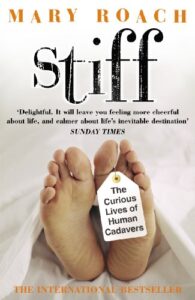
Stiff by Mary Roach is a fascinating and humorous book that explores the various ways in which human cadavers have been used throughout history. The book delves into the world of human dissection, organ donation, and forensic research, providing an engaging and informative account of the uses and misuses of the human body after death. Roach’s writing style is witty and irreverent, making even the most macabre topics entertaining and engaging. Stiff is an excellent read for medical students interested in anatomy, pathology, and forensic medicine.
The Man Who Mistook His Wife for a Hat

The Man Who Mistook His Wife for a Hat by Oliver Sacks is a fascinating and insightful exploration of the human mind and its capacity for both normal and abnormal functioning. The book is a collection of case studies, in which Sacks describes patients with a wide range of neurological disorders, including autism, Tourette’s syndrome, and dementia. Through these stories, Sacks illuminates the ways in which our brains shape our perceptions, emotions, and identities. For medical students, the book offers valuable insights into the complexity of the human brain and the challenges of diagnosing and treating neurological disorders.
In summary
So there we have it! Our 40 best books for medical students. Reading is an important part of any medical education, and medical students should be familiar with the latest scientific and medical knowledge, as well as understand the complex ethical and legal aspects of the medical profession. We hope that these books offer an essential foundation for medical school, as well as provide insight into the medical profession and its history. Happy reading!

